TV
Sweetpea
Sweetpea is a new dark comedy series created by Kristie Swain and adapted from a novel series by CJ Skuse. The series stars the ethereal goddess that is Ella Purnell (Fallout, Yellowjackets) using her actual English accent!
Purnell plays a young woman whose name is not actually Sweetpea, though she is very much a wallflower. Though even Wallflower might have too much gravitas, Rhiannon (Purnell) is treated by those around her like a weed. She is stepped on and ignored by everyone except her dad and pet chihuahua. Many have argued that Purnell is just ‘too pretty’ to be that abjectly ignored by everyone. However, Purnell is an amazing actress who plays the washed-out, doe-eyed, shrinking ‘sweetpea’ so convincingly.
Rhiannon was bullied heavily in school which led to her developing trichotillomania (a hair-pulling disorder) which ultimately caused bald patches on her scalp. She still keeps an unconvincing brunette wig in a drawer in her bedroom. Rhiannon’s dad is constantly encouraging Rhiannon to stand up for herself. Unfortunately (light spoiler!) Rhiannon’s Dad dies from his illness in the first episode, leaving her alone in the world.
Rhiannon returns home to the large empty house she once shared with her dad. After yet another tragic incident Rhiannon looks at her life, her thirst for revenge is obvious. Particularly against her main school bully Julia Blenkingsopp (Nicôle Lecky).
Rhiannon sees Julia as having a perfect life and didn’t peak in high school “like bullies are supposed to do!”. When Rhiannon returned to work as an admin assistant for a local paper, not only did none of her colleagues notice her absence but they didn’t acknowledge her return. The only person who appears to talk to her is her boss Norman played by Jeremy Swift (Ted Lasso) who condescendingly calls her “sweetpea” and demands tea.
Rhiannon’s mental state declines enough for her to finally confront Julia in a club. Julia and her friends laugh at Rhiannon which brings memories of school back and anxiously tugging at her hair. This leads Rhiannon to commit a horrifying yet liberating crime when leaving the club leading to a whole new way of expressing herself.
What I Liked:
I enjoyed watching Rhiannon’s confidence grow throughout the series. Purnell herself spoke about the production of subtlety added makeup to subconsciously influence the change in her. Rhiannon transformed from a shrinking girl to a hip-swaying, go-getting career woman. Yet its clear there is a lot of mental turmoil within Rhiannon. Purnell (2024) jokes that she actually “got kinda jacked” due to the tension she held in her body whilst suppressing Rhiannon’s rage. Purnell also comments on how freeing it was to let it all out which Rhiannon does many times and is just as satisfying for the audience!
Initially, I found every character rather one-dimensional and stale compared to Purnell. However, as the show progresses most characters become multifaceted, particularly Julia. The narrative of the show really makes you question your own morals and sense of justice. You find yourself making excuses for Rhiannon and almost cheering her on when you really, really shouldn’t.
I also enjoyed how the show explores the victim complex. Is Rhiannon really a victim or has she taken on this mantle and lived her life accordingly? Sweetpea expertly plays with the shades of grey in the ideas of what makes someone a bully and what makes someone a victim.
Sweetpea fits in perfectly in the genre of British black comedy. Scenes like when Rhiannon is clearing out her chest freezer and then climbs in herself to see if it could potentially fit a body. The door of the freezer almost closes on her but she catches it just in time. This scene perfectly captures just what kind of character Rhiannon is.
I also liked how the character’s houses were used as metaphors for their lives. The home Rhiannon shared with her father is messy and cozy yet in desperate need of TLC and repair much like Rhiannon herself. You can tell it’s a well-loved home with a long history much like Rhiannon and her father’s relationship. In stark contrast to Julia’s fiercely stylish and minimalistic home which she shares with her fiancé. It’s sleek and modern yet ultimately empty with little sign of love.
The opening credits and music choices are also fire.
What Could Be Improved:
Like many others, I didn’t quite believe someone as beautiful as Purnell would be completely ignored by the general public. It did look at times like they were relying on drab clothing and too light foundation to make her look mousey. However, as stated, Purnell’s performance does save it.
The main ‘love triangle’ (if could even call it that) was a bit forced. Calam Lynch’s portrayal of Rhiannon’s colleague ‘AJ’ was a bit too enamored with Rhiannon with no real build-up. However, I found myself really enjoying Jon Pointing’s portrayal of ‘Craig’ and wishing his arc had been explored more.
I really wanted the show to lean more into the exploration of ‘abuser’ and the ‘abused’ and take it to a deeper level. Maybe in series 2?
All in all, I enjoyed this traverse through Sweetpea’s world. I am interested to see where they go with it in the future.
Three and a half stars.
TV
With the tragic news of Michelle Trachtenberg’s death, we at That’s My Entertainment wanted to pay tribute.
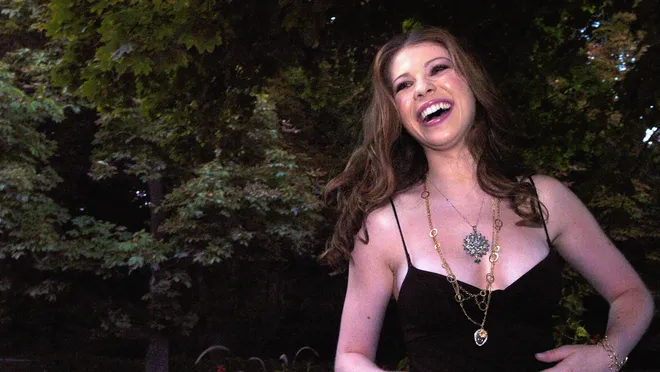
With her ice-blue doe eyes, enviable long, shiny brown hair, and button nose; Michelle Christine Trachtenberg looked every bit the prolific child star she was. Often described as radiating the type of vulnerability that Hollywood just loves in its young stars.
Trachtenberg acted in commercials from the age of 3. At the age of 10 she starred in Harriet the Spy (1996) as the titular spy. However, most of her fans will forever know her as Dawn Summers the (sometimes bratty) kid sister of Buffy Summers star of the cult TV show; Buffy the Vampire Slayer (1997-2003). Trachtenberg joined the main cast for the shows fifth season in 2000.
Dawn’s introduction heralded the dawning of a newer, more adult era of what was still seen as a teen supernatural drama. Trachtenberg’s character and introduction is still somewhat controversial in the Buffy fandom. Though loathed by some, no one could deny Trachtenberg’s obvious talent and how well she fit in with the main cast. Trachtenberg had worked with the show’s star, Sarah Michelle Gellar, in the long-running show All My Children (1970-2013), Gellar even recommended Trachtenberg for the part of Dawn. Buffy’s producers loved Trachtenberg despite the fact that Dawn’s character was initially written as a younger one. This is why a lot of Dawn’s dialogue and actions initially seem like that of a much younger child. This served to annoy certain fans even more.
Despite the ire, Buffy and Dawn’s sibling, and, oftentimes, paternal relationship became a touchstone of the 7-year-long series. Viewers watched Dawn develop from an immature girl to a capable young woman who calls others (particularly men) out on their bullshit. Many women identified with Dawn’s journey of attaining her autonomy. Even the biggest Dawn critics can’t argue that Dawn was a pivotal character in many of Buffy’s groundbreaking episodes, such as (spoilers!); The Body where the sister’s mother dies to Buffy’s resurrection in Bargaining. Dawn processed loss and dysfunction at a very young age. An inside joke in the Buffy fandom is that you know you have matured when you become a Dawn sympathiser.
After Buffy Trachtenberg took on maturer roles such as Jenny in the 2004 teen sex comedy EuroTrip. The trailer of which included a deleted scene with Trachtenberg’s character flashing her bra at passing cars whilst hitchhiking. Scenes such as these pivot greatly from the innocent Dawn Summers.
Trachtenberg would continue to work regularly, guest starring in TV shows such as Six Feet Under (2004) and House (2006). In 2008 Trachtenberg took on the role of manipulative socialite Georgina Sparks in Gossip Girl (2007-2012). Her Gossip Girl co-star; Blake Lively, described Trachtenberg on an Instagram post as; “…electricity. You knew when she entered a room because the vibration changed”. Trachtenberg was certainly energetic in interviews and threw herself into every acting challenge with aplomb.
Growing up in front of the camera meant that Trachtenberg fell victim to the objectification of her changing body. At the time it was unfortunately common for certain sites to be devoted to counting down the days until a certain starlet turned 18. In response to her own ‘Trachtenberg to 18’ counters: “You’re never gonna get a chance! So what’s your counter for?”
Cut to 2021, fellow Buffy castmate Charisma Carpenter opens up about the cruel treatment she received working under Buffy and its spinoff Angel (1999-2004) creator Joss Whedon. Carpenter bravely spoke of the misogyny, sexual harassment, and bullying she endured from Whedon that still affects her to this day. Carpenter’s claims became the pin that finally deflated Whedon’s godlike presence in the entertainment industry.
Trachtenberg stood with Carpenter; posting on her own social media that as a now 35 year old being “brave enough” to share her story about Whedon. She agreed with Carpenter saying: “This must. Be Known. As a teenager. With his not appropriate behaviour…very. Not. Appropriate.” She would later add to this statement by saying there was a rule on-set that Whedon was not allowed alone in a room with her again. Trachtenberg would have been around 15 working on Buffy.
Michelle Trachtenberg feeling strong enough to stand up to an alleged abuser such as Whedon and others like him mirrors not only Dawn’s growth but the overarching arc of Buffy the Vampire Slayer. The dark irony of Whedon’s alleged true nature as he created some of the greatest feminist icons is not lost. However, with Trachtenberg, Carpenter, Gellar, and many other actresses standing up for themselves and each other is really what the fictional show was about.
Trachtenberg was a great actress but she was also instrumental in helping to dismantle the sexist power dynamics within the industry for future generations of performers.
Much like her character Dawn, Trachtenberg found her voice and her strength in the face of insidious forces. As tragic as her untimely death is, she will always be remembered not just for her talent but for her bravery in facing years of oppression and objectification. Rest In Power Michelle Trachtenberg, you are truly a feminist icon both on and off of screen.
TV
CBS’s new show Watson breathes new life into the beloved Sherlock Holmes universe,

CBS’s new show Watson breathes new life into the beloved Sherlock Holmes universe, offering a modern adaptation that both honors its roots and explores fresh, contemporary themes. As a long-time fan of Sherlock Holmes, I was eager to see how this reimagining would unfold, and I am thrilled to say that Watson delivers a compelling and dynamic take on the classic characters.
Morris Chestnut’s remarkable portrayal of Dr. John Watson is at the heart of the series. Traditionally seen as the steadfast companion to Sherlock Holmes, Watson takes center stage in this adaptation, and Chestnut’s performance is nothing short of outstanding. Transforming Watson into a leading figure whose personal journey is as captivating as the mysteries he helps solve. Chestnut’s Watson is a character in his own right, not merely a sidekick, and his modern sensibilities breathe fresh air into the role.
The show’s setting in contemporary times is executed with finesse. By weaving modern-day elements into the narrative, Watson manages to stay true to the essence of Sir Arthur Conan Doyle’s original stories while making them accessible and relevant to today’s audience. The dynamic between Watson and the world around him is engaging and entertaining, offering new perspectives on themes such as justice, loyalty, and intellect. Fans of the original tales will appreciate the clever nods to classic storylines, while newcomers will find plenty to enjoy in the updated context.
Spoiler alert:
One of the most striking elements of the show is Randall Park’s portrayal of James Moriarty. Traditionally envisioned as a calculating and sinister adversary, this version of Moriarty offers a fascinating twist. Park’s performance combines darkness with a sharp, comedic edge, creating a character who is as unpredictable as he is engaging. This fresh take on Moriarty elevates him beyond a mere antagonist, making him a multidimensional figure who should keep viewers guessing at every turn.
Overall, “Watson” is a bold and refreshing addition to the Sherlock Holmes universe. Featuring compelling performances, clever integration of modern elements, and innovative character dynamics, the show provides something new and exciting for both longtime fans and newcomers to the world of Holmes and Watson. It’s a must-watch for anyone seeking a smart, entertaining, and thoroughly engaging adaptation of these timeless characters.
TV
Did JD from Scrubs Have a Dark Past?

TW: Discussions of child abuse and neglect.
The sitcom Scrubs ran from 2001- 2010 delighting viewers with the escapades of daydreaming Dr ‘JD’ Dorian and his friends. Unlike most TV sitcoms Scrubs perfectly balanced the comedic and the tragic. Being set in a teaching hospital with most of the main cast being doctors; there was plenty of fodder for some truly heart-wrenching storylines.
Like with most sitcoms, if you look under the jolly veneer (and have too much time on your hands) a much darker story emerges. In Scrubs, I would argue, this may be the past of its titular protagonist JD (played by Zach Braff). Some fans (ok, me) speculate that not only did JD have a less than ideal childhood but an abusive one.
Hints of this could be interpretated throughout the series:-
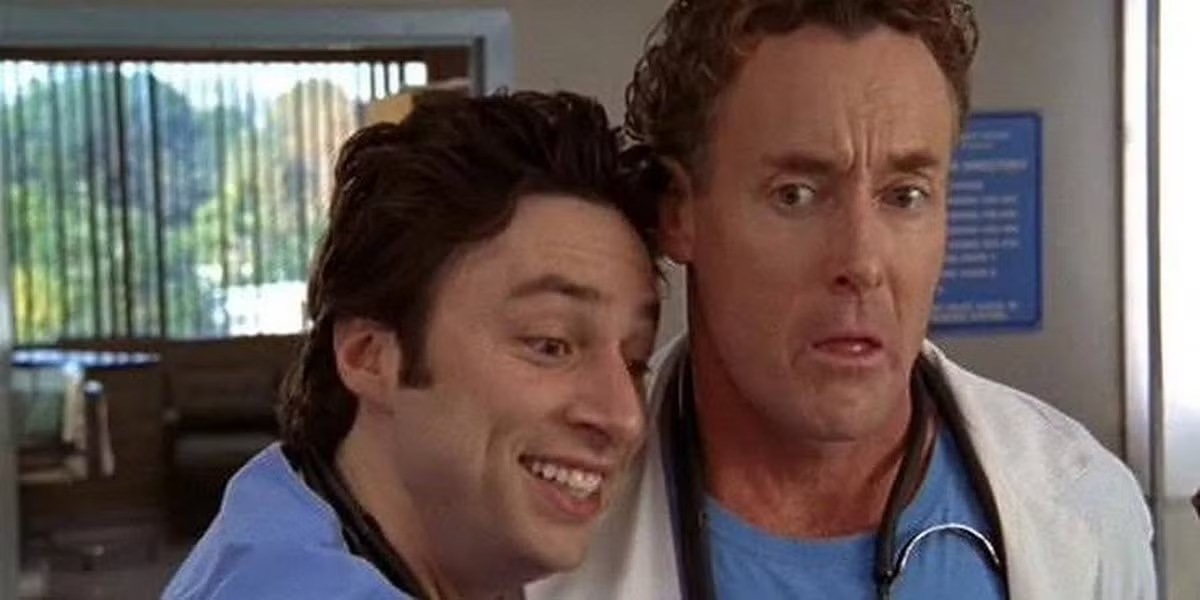
1. Attachment to Dr Cox
One of the most popular aspects of the series is the oddly touching relationship between mentor and mentee: Dr Cox (John C McGinley) and JD. It’s perfectly normal to admire and want to emulate an older colleague. But JD’s admiration of Dr Cox always seemed to go a step further. JD looked to the older doc as not only a mentor but a father figure.
JD explicitly states this throughout the series. Most notably in the finale; when during his much sought after hug JD claims Dr Cox smells “like a father figure”. This is odd as Dr Cox is only about 13 years JD’s senior. We know JD’s biological father (played by the late John Ritter) was pretty much absent during JD’s childhood. Is this yearning for a parental figure a way to fix JD’s damaged childhood?
As loathe as I am to criticise a fan favourite but Dr Cox openly mocks and belittles JD, almost never referring to his protégé by name. Instead by a vast archive of disparaging nicknames. The show does establish that there is love and respect om both sides, from Dr Cox deep down (deep, deep down). But why does JD not only put up with as well as seek out this treatment? Very masochistic. Or, has JD been subconsciously taught that taunts and aggression equate to love?
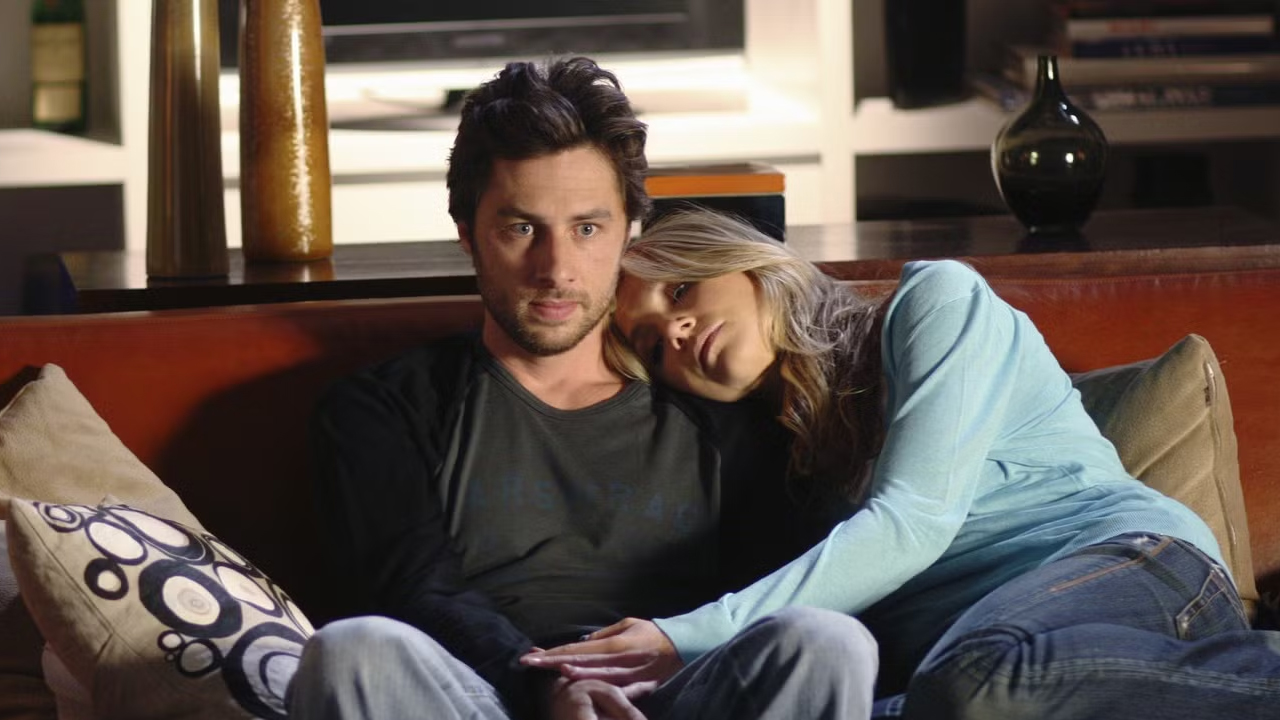
2. Feels Affinity with Dr Cox and Elliot
The show establishes early on that Dr Cox had an abusive homelife as a child. He openly reminisces about his parents being violent alcoholics. Is this the real reason that JD clamours for Dr Cox’s attention? Does JD see Dr Cox as an inspiration of someone who came from a similar background to his and became a well-respected doctor and family man?
Is the same true of JD’s on/off girlfriend, future wife and fellow doctor; Elliot? The show establishes that Elliot’s parents are mentally, emotionally, and financially abusive. Are JD and Elliot drawn to one another (partly) because they are both traumatised by their past? Even when it is proven time and time again that they are not suited.

3. Hostile Relationship with Older Brother
JD’s older brother Dan (Tom Cavanagh) appears several times in the show. Despite regularly visiting his kid brother, JD makes clear that these visits are not welcomed. JD’s ire is uncharacteristic as he’s shown as an ardent people pleaser throughout the show. Yes, Dan did bully JD throughout their childhood, though it’s unclear whether this was normal sibling rivalry or more.
In Series 3 Episode 5 ‘My Brother, Where Art Thou?’ JD attempts to cut off contact with Dan claiming that Dan never looked out for him. Even as children of divorce why is JD so upset his brother didn’t protect or “come through” for him? In the same scene JD comments about how their mother “married anyone that rang the doorbell”. Reading into this (hey, it’s what we’re here for) did Dan not protect JD from these multiple husbands?

4. Audience Never Actually See JD’s Mother
To me this is the most obvious that something is suspicious about the Dorian matriarch. Despite seeing every other cast members mother (except Dr Cox but its implied that his parents are dead) we never see JD’s. He, at the very least, seems to have a good relationship with his mother. Mostly speaks highly of her and she calls often. It doesn’t follow the trope many sitcoms use; having a character the audience never physically sees being used for comedic effect.
We hear JD’s mum (Barbara) speak in a flashback (Series 3 Episode 21 ‘My Self-Examination’). While Barbara was tucking young JD into bed she was saying some quite toxic things to her child, like how no women will ever be good enough for him. It is clear this scene is supposed to be somewhat creepy as Barbara is stroking the child’s face in an inappropriate manner. Adult JD even refers to his mum as “sexy” in the same episode. Very Freudian but in the light of everything else we are discussing: very disturbing!
5. JD’s Mother Drank
Linked to number 4 JD admits in Series 8 Episode 2 ‘My Last Words’ JD admits his mum “drank a lot”. Does this statement answer some questions about JD’s odd childhood?
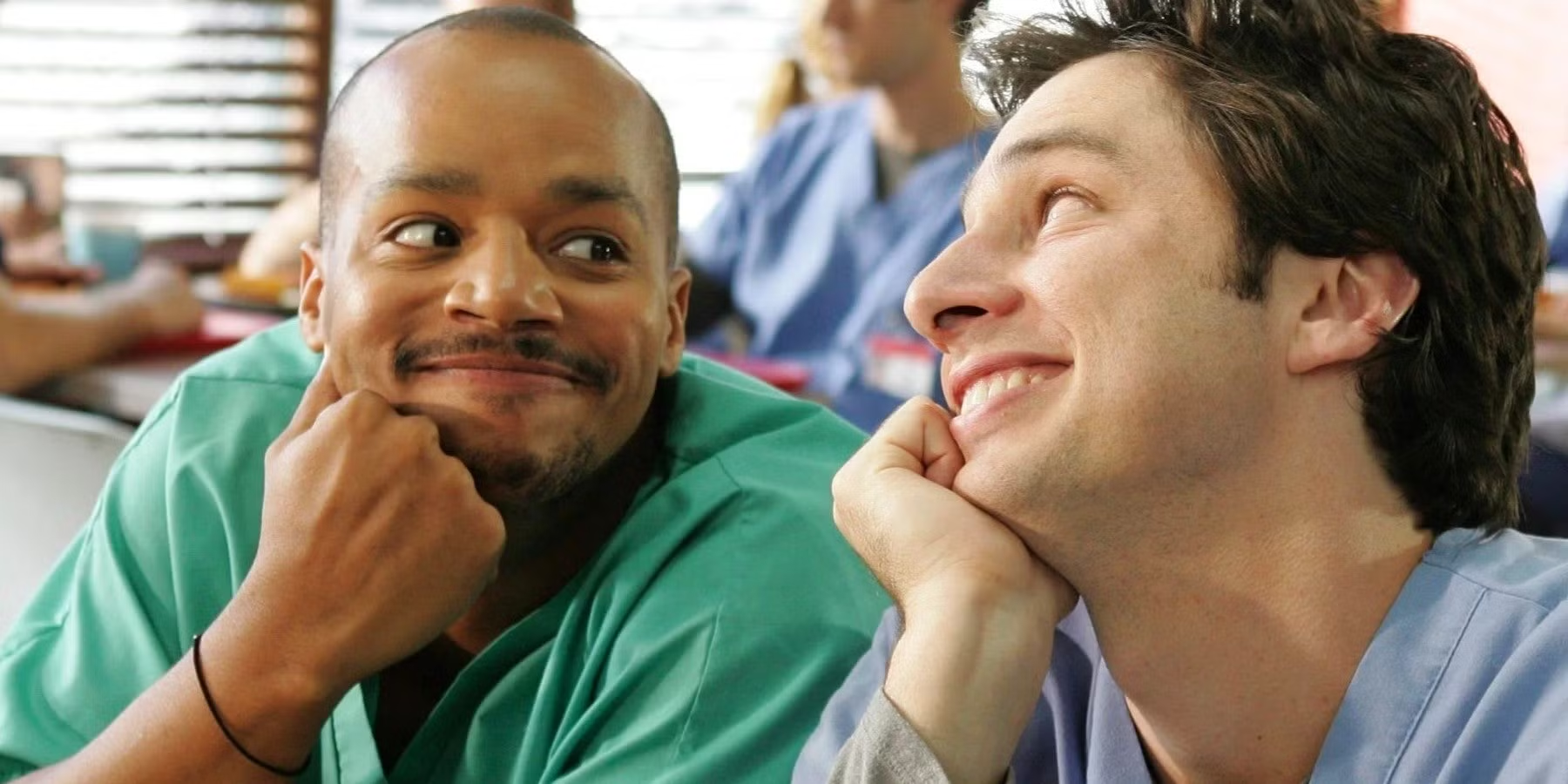
6. JD is a People Pleaser
As we have already mentioned JD is a pathological people pleaser (what’s that like?). As a doctor he goes above and beyond for his patients. He does everything from finding patients estranged family members (Series 4 Episode 11 ‘My Unicorn’) to shaving his head in solidarity with a chemo patient (Series 5 Episode 15 ‘My Extra Mile’). Of course this is all very commendable but JD particularly enjoys the gratitude. Why does he need this validation? Is this a coping mechanism from a turbulent background who had to go above and beyond to get the love that should have been unconditional?
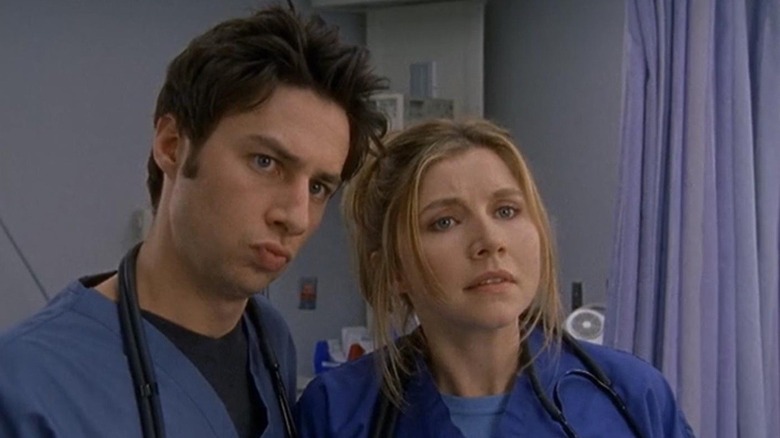
7. Extremely Tactile
Another of JD’s character traits is he extremely tactile. This is of course played up for comedy with his ‘sneak hugs’ (Series 6 Episode 13 ‘My Scrubs’) delivered to the stand-offish Dr Cox or the fact he has his friends on a ‘hugging schedule’ (Series 5 Episode 8 ‘My Big Bird’). Is this someone trying to seek the love and affection he never received in childhood? Or reassure himself that the people he loves won’t disappear?
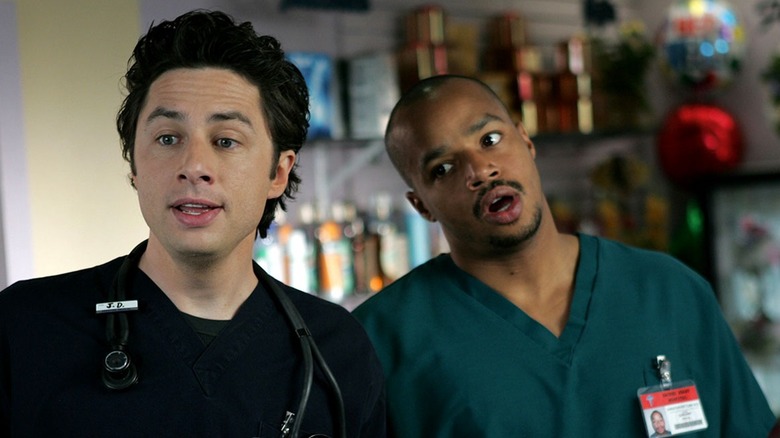
8. Self-Sabotaging
A common reaction to childhood trauma is self-sabotaging behaviour. In his romantic relationships JD has this in spades. Throughout the run of the show JD has more romantic partners than the rest of cast put together. It is acknowledged that JD goes from relationship to relationship with alarming speed and breaks them off for shallow reasons. Again, he may be trying to seek the love and security he never had in childhood.
JD’s damaged psyche is put on full display when after spending the majority of the series chasing Elliot she finally leaves her loving boyfriend for him. JD immediately decides he doesn’t want her anymore to many fans outrage (Series 3 Episode 20 ‘My Fault’).
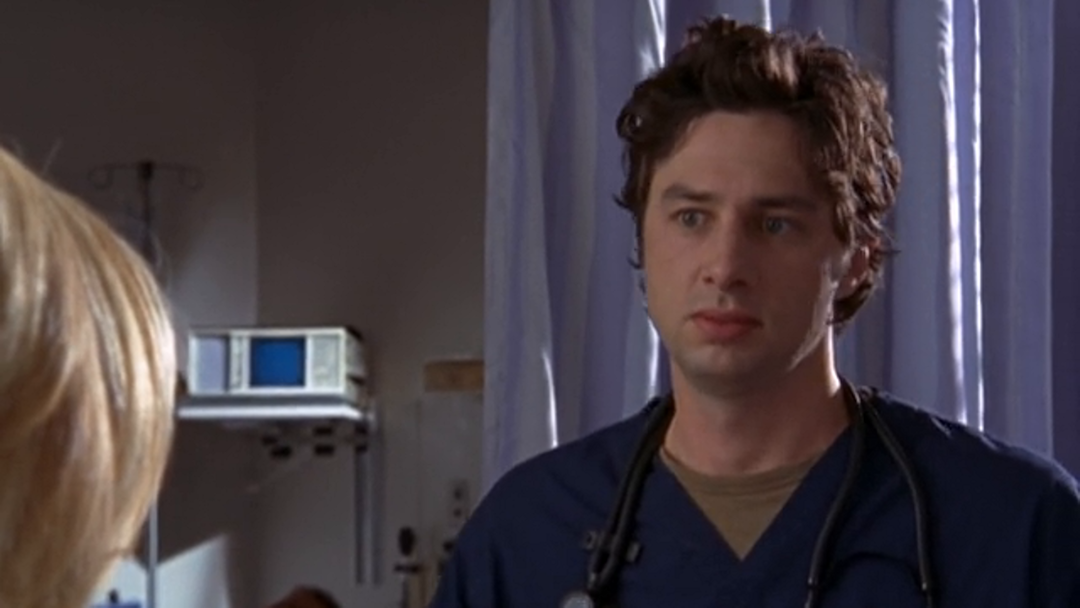
9. No Therapy
As well as never actually seeing his mother, we never see JD engaged in any kind of therapy. All of the other characters attend various types of therapy throughout the series. JD does not, despite arguably needing it the most. Is JD perhaps too scared of what therapy might uncover or not want to deal with his trauma head on?
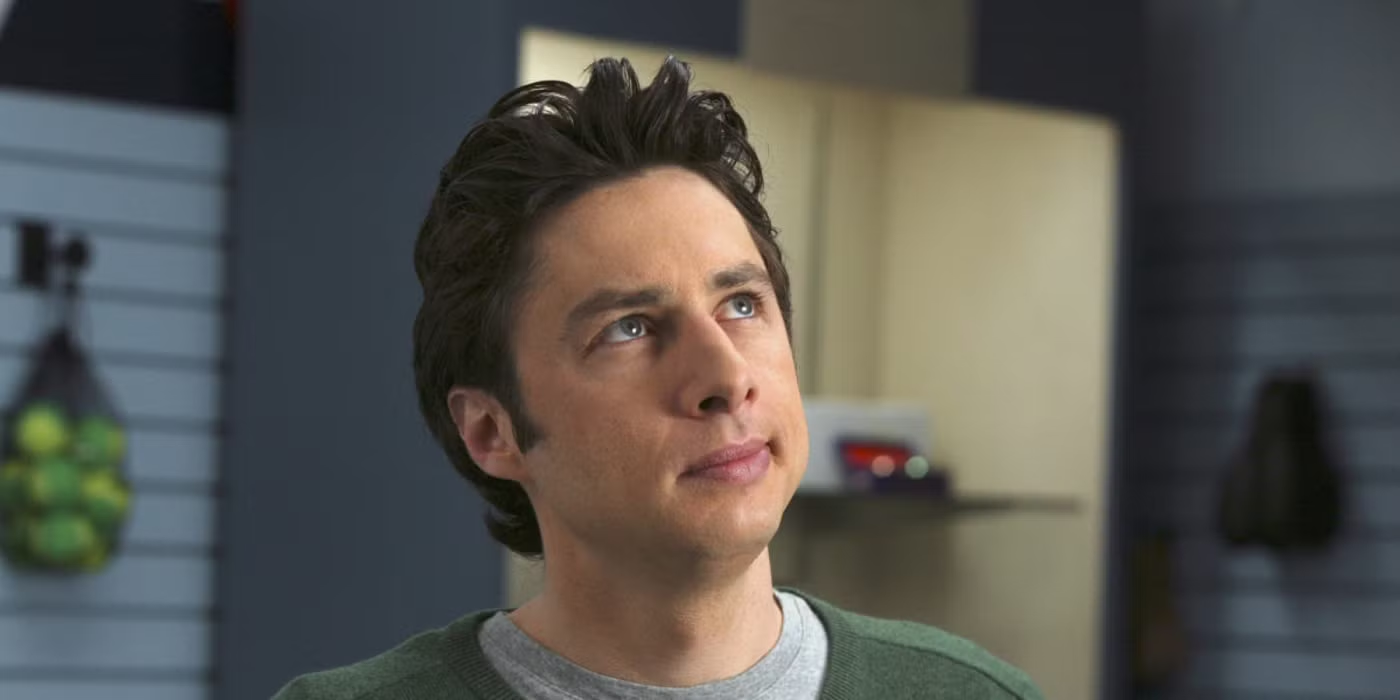
10. Overactive Imagination
During Scrubs entire run (except the final series thou shalt not be named) hinges on JD’s overactive imagination. His outlandish fantasies make for excellent comedy and unique sequiturs to break up the storylines. But what if this was yet another coping mechanism for the hapless leading man?
Children from challenging background often disappear into elaborate fantasy worlds in order to escape their surroundings. Is this a habit JD could never quite kick? It would explain why he doesn’t seem to have a lot of control of his daydreaming despite being an adult. It is a comfort and a way to deal with the difficult stuff life throws at him.
If any or all of these speculations are true Scrubs goes from being a mere half-hour sitcom to a story of one man’s triumph over his dark past. Despite his flaws and failings JD has still made something of himself and is surrounded by his chosen family; all of whom love him for who he is. This is extremely inspiring.
-
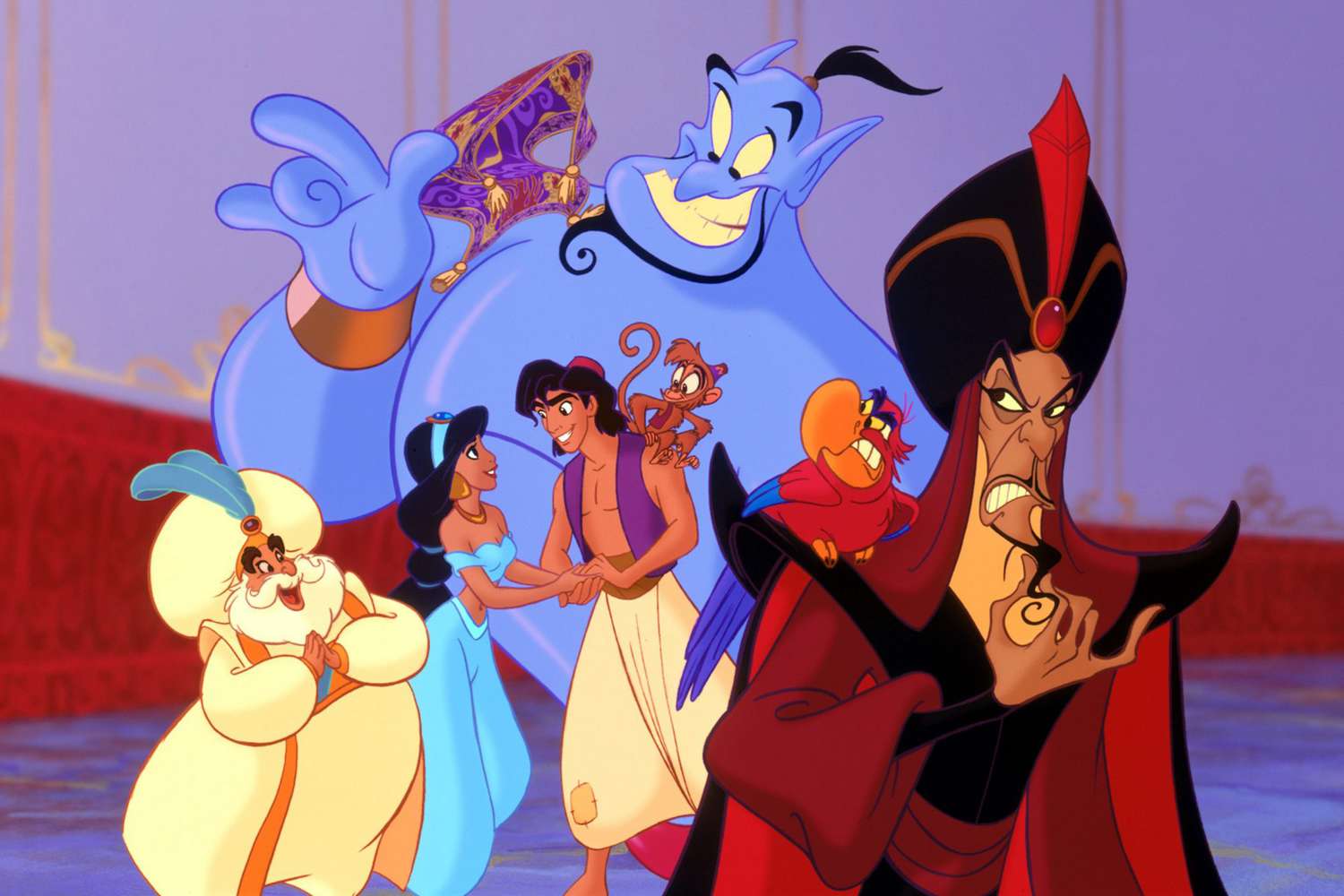
 Movie19 hours ago
Movie19 hours agoTop 10 Unexpected Movies Where The Bad Guy Wins
-
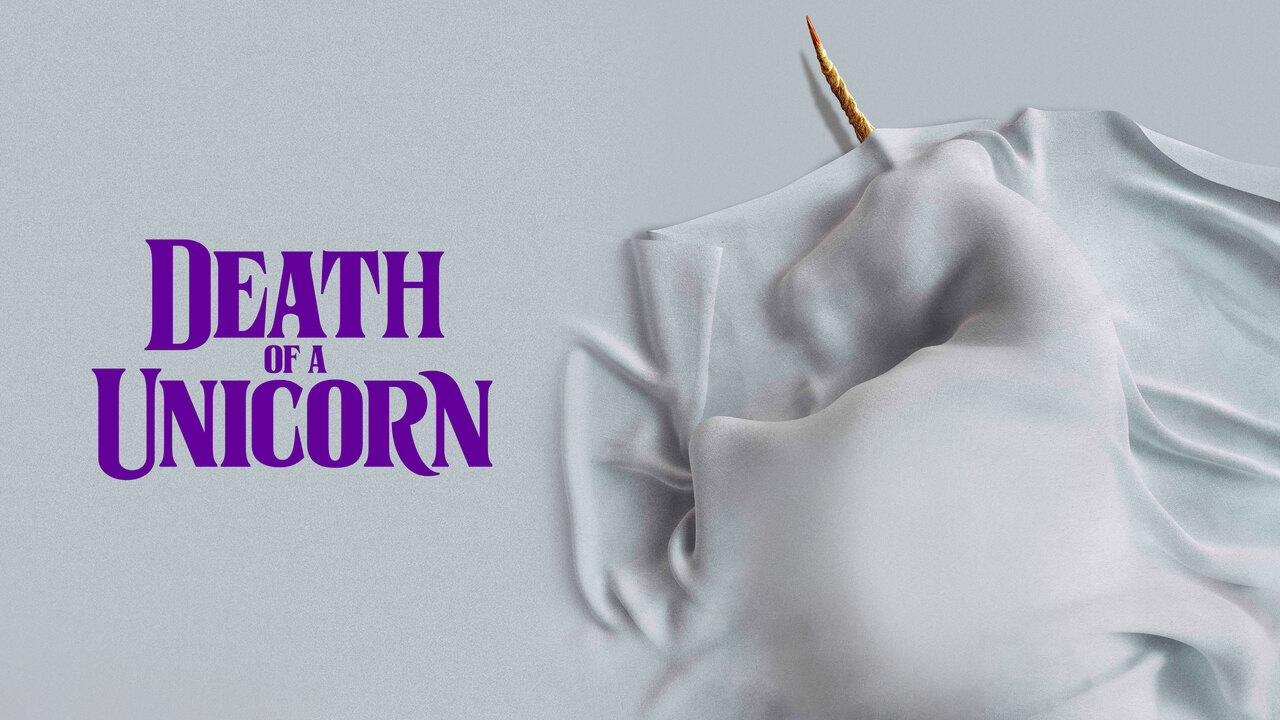
 Movie9 hours ago
Movie9 hours ago“Death of a Unicorn: A24’s Twisted Fairytale You Won’t Forget”
-

 Interviews13 hours ago
Interviews13 hours agoWonderCon 2025: A Faith Full Dickens Tale & The King of Kings Animated Movie
-
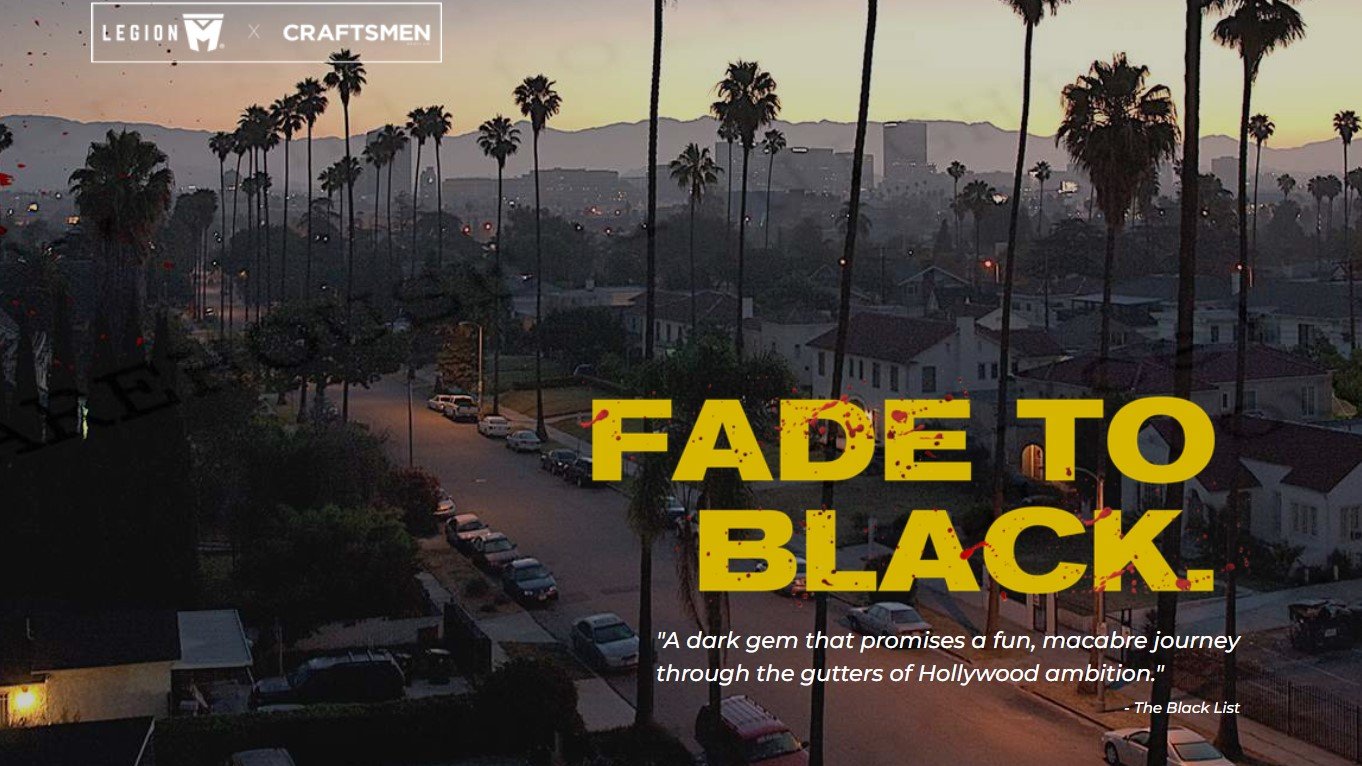
 Interviews19 hours ago
Interviews19 hours agoWonderCon 2025: Fade to Black Interviews



